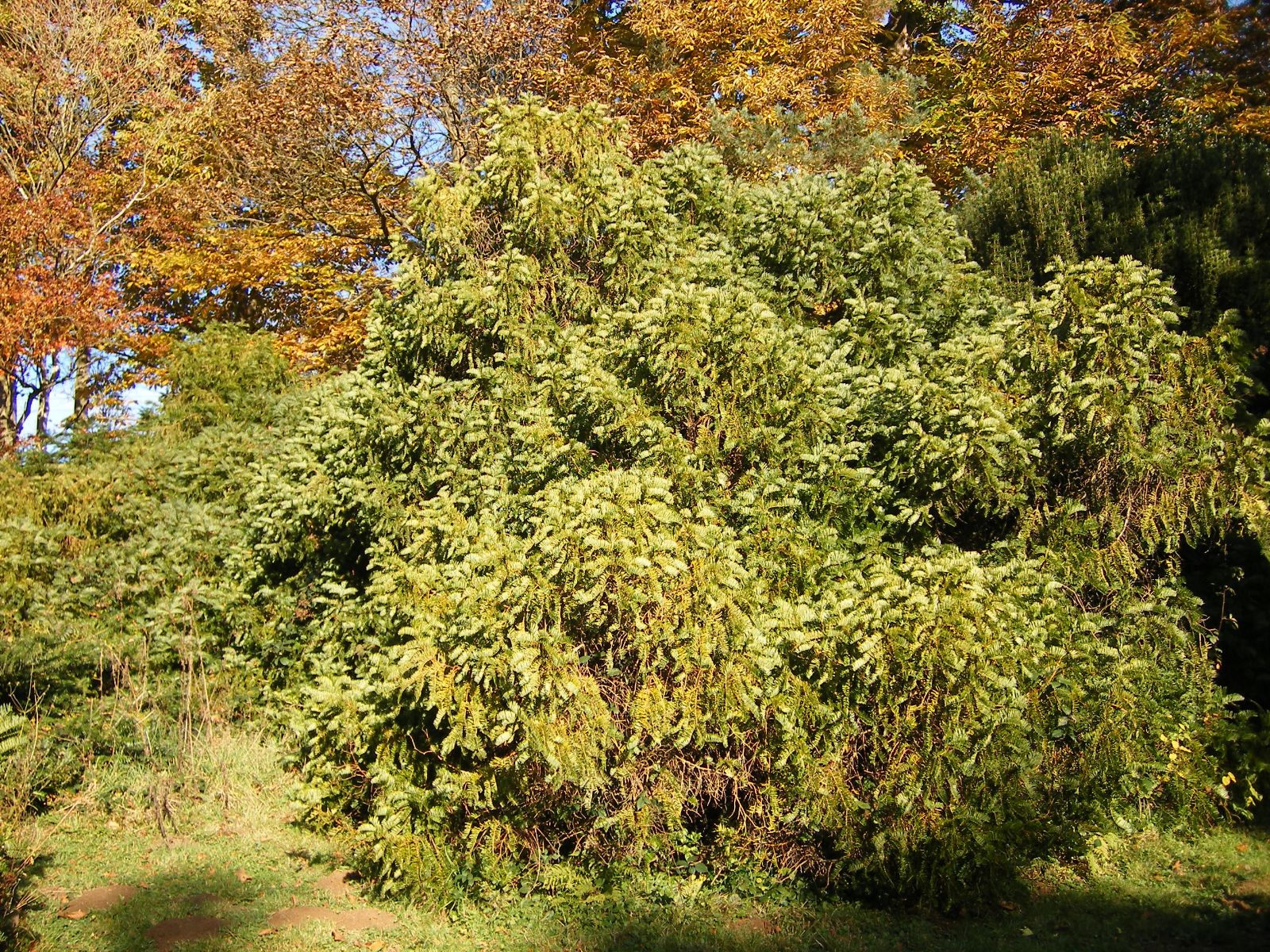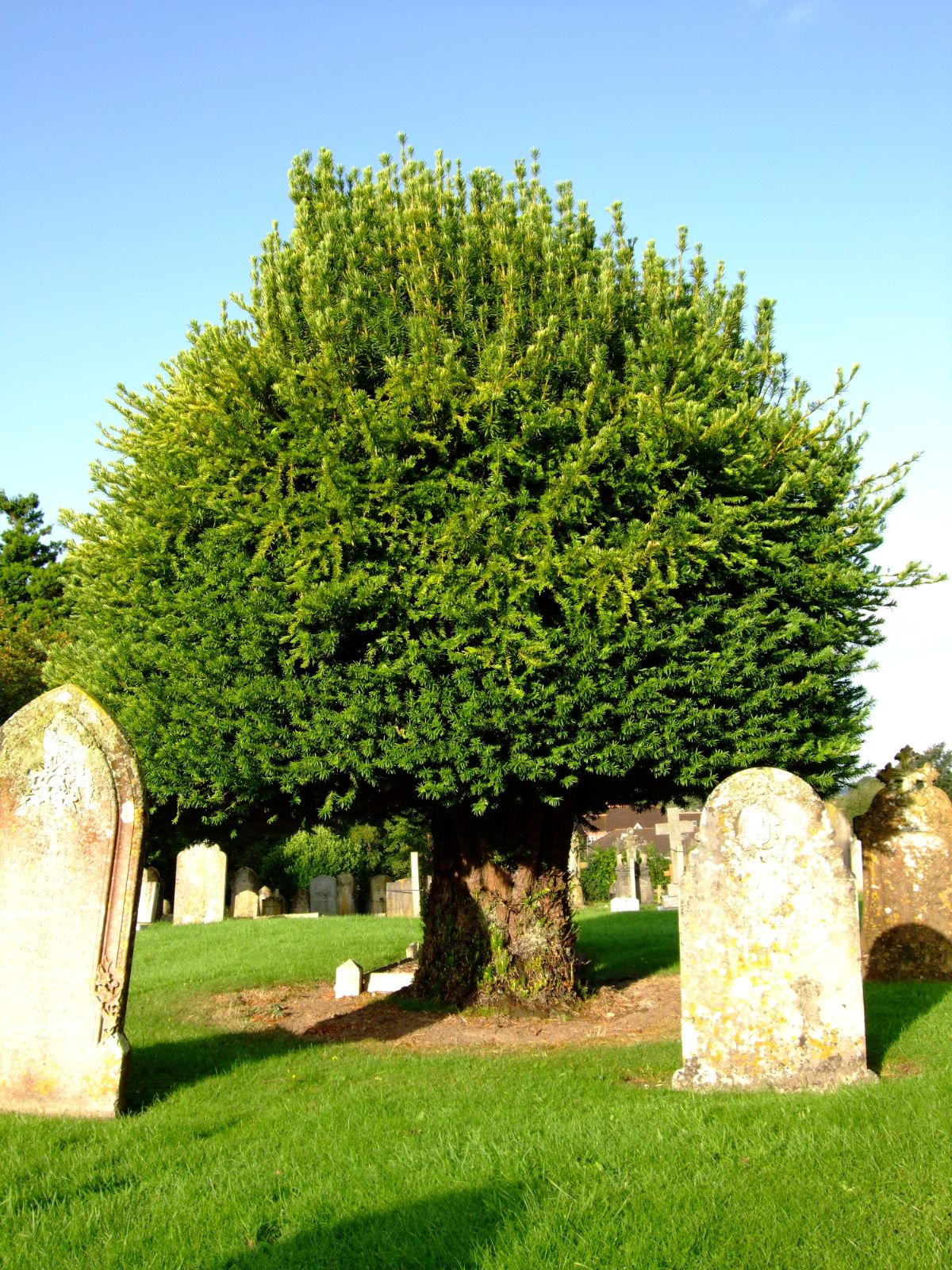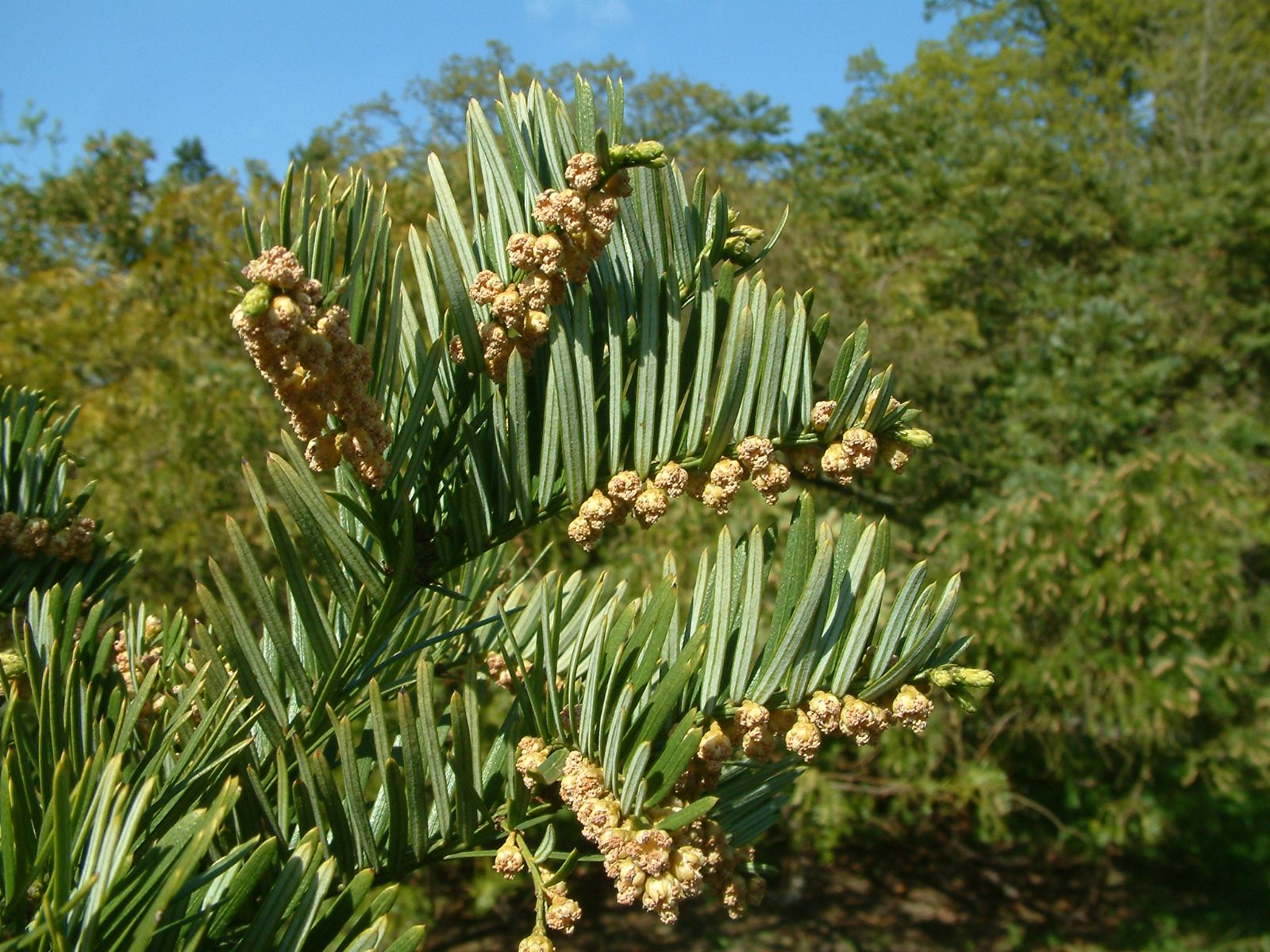Cephalotaxus harringtonia
Credits
Article from Bean's Trees and Shrubs Hardy in the British Isles
Recommended citation
'Cephalotaxus harringtonia' from the website Trees and Shrubs Online (treesandshrubsonline.
Genus
Synonyms
- Taxus harringtonia Forbes
- Cephalotaxus pedunculata Sieb. & Zucc.
- Cephalotaxus drupacea var. pedunculata (Sieb. & Zucc.) Miq.
A spreading shrub or a small tree, with mostly alternate branchlets. Leaves in two opposite ranks not all in the same plane, some being semi-erect; linear, 3⁄4 to 21⁄2 in. long, about 1⁄8 in. wide, rather abruptly narrowed to a fine point; dark green above, marked beneath with a broad glaucous strip each side the midrib, composed of fifteen to eighteen fine lines of stomata. Male flowers in a branched cluster 3⁄4 to 11⁄4 in. long on a peduncle 1⁄4 to 1 in. long. Fruit oval, or obovoid, about 1 in. long.
C. harringtonia was described from a male plant belonging to what was apparently a Japanese garden clone, introduced to Europe by Siebold in 1829. In cultivation it makes as a rule a rather low, spreading bush – the tallest at Kew is about 14 ft high.
C. harringtonia is very near in its characters to the wild Japanese cephalotaxus which Siebold and Zuccarini named C. drupacea and may indeed be part of the normal variation of that species. Unfortunately, the name C. harringtonia has priority, and if the two are to be regarded as at the most varietally distinct, which botanists now consider to be the case, then C. drupacea must take the subordinate position as:
From the Supplement (Vol. V)
† cv. ‘Prostrata’. – Compact and semi-prostrate habit, attaining 2 or 3 ft in height, three times that in width. A sport raised by Messrs Hillier before 1920.
Both the species mentioned above bear original epithets which, under present rules, have to be treated as ‘orthographic errors’. C. fortuni should be C. fortunei, while the specific epithet of C. harringtonia would have to be emended to harringtonii or, better perhaps, harringtoniana. But the choice is best left to a monographer of the genus.
'Fastigiata'
A very interesting and distinct form, analogous in its mode of growth to the Irish Yew. The branches and branchlets are quite erect, sparsely divided, all the leaves being arranged spirally like those of the leading shoot of the type, and mostly decurved. The shrub is slow-growing, and of sturdy, columnar shape when young; useful for positions where a formal habit is desired. I have seen, however, large specimens in Italy and Dalmatia that assume a more open, spreading form (like old Irish yews), with a tendency to revert to the typical, distichous-leaved form at the base. Although long cultivated in Japan, this clone probably originated in Korea, as the Japanese name ‘Chosen-maki’ implies.
'Sphaeralis'
A form with quite globular fruits described by Dr Masters from a tree growing in the garden of the Rev. J. Goring at Steyning, Sussex. (Gard. Chron., 1884, p. 113 and fig. 23.)var. drupacea (Sieb. & Zucc.) Koidzumi
Synonyms
C. drupacea Sieb. & Zucc
var. sinensis (Rehd. & Wils.) Rehd.
Synonyms
C. drupacea var. sinensis Rehd. & Wils.
C. sinensis (Rehd. & Wils.) Li




